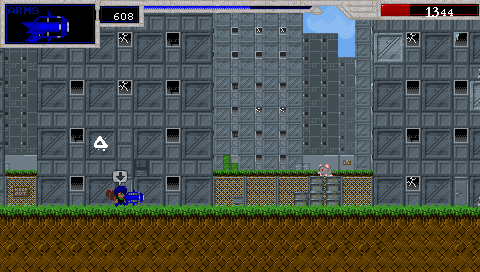Let's think about a typical Tactics RPG game, or any RPG game in fact. Typically, you fight a large army of enemy units that are homogenous (aka, same class/sprite/abilities) with a very diverse cast of player characters (for instance, a blue-haired swordsman, a pink-haired healer princess, a big bulky axe wielder and a cute monster that's bad at more or less everything).
Why is that always so?The best reason I can come up with: you're supposed to use the guys most effective in the situation to beat the pixels outta the enemies, and let all other characters hide or buff/heal the 'active' party. Or, in a bit more positive terms, adapt a tactic.Myself, I've sometimes gotten jealous on the enemy armies in Fire Emblem series because all units are in perfect sync. Of course, I'm not able to control them or anything so that I know how controlling them feels, but I sorta imagine it to be quite fun.So why do no RPGs really offer you this? Fire Emblem, for instance, give you very little room to customize characters or recruit new ones. Disgaea lets you create any characters you please within certain limitations, on the other hand.The thing is, more or less all characters with the same class tends to behave exactly the same. There is often little room to customize characters within the class, so having multiple characters of the same class to grind would really make you feel like you're doing the same thing over and over, moreso than grinding different classes of characters. I suspect that's the reason so few games feel like they offer the option to make a homogenous party.How could one avert this?What I have thought about:1) You could offer a 'mentorship' system where multiple characters of the same class benefit from each other, for instance getting reduced level-up XP to the zone where adding one more character to the party would not even affect the experience grinding time (or maybe even speed it up!).2) You could offer a quick class change system so that you could instantly get your entire party into a certain class if needed and diverse it if needed (Final Fantasy V did this, and III (j) too to some extent). To actually make grinding/diversation matter one would likely use a system where the level up stat gains depend on your current class, but you have a pool of "Class Stats" that change depending on your class. Plus, of course, passive and active abilities.
I know what you mean, but typically allies are with you throughout the whole game, and you only see one enemy for about ten seconds before they're dead and forgotten.
I played Fire Emblem and Final Fantasy III, in fact that's the only Final Fantasy game I've played other than Final Fantasy Adventure for GB.Anyways, in Fire Emblem I picked a favorite among my ranks. He was a priest, Lucas I believe. I did nothing but level him. He did most, if not all combat, and all money was spent buying his tomes. He was the only character I upgraded/promoted, and he kicked total ass.But that's beside the point.Enemies were cool in that game because you see an enemy of a class you don't yet have, and just think "Woah, I want one." And then you're forced to kill it.I don't understand idea 1, but the second one was in FF3 and I used it a whole lot when new classes became available. At one point, all my characters were spear-wielding dragoons.Quote:
They all have names, personalities, dialogue, and a unique palette; and when they die they're dead.
In Fire Emblem, allies are more than just units.Enemies for the most part, are just units.Maybe I'm not part of the target audience of Fire Emblem… I've had a bunch of "Oh, dangit! Concentrate on developping the main characters for goshsake!! Haven't seen them talking in AGES!!" moments in my course of playing III and VII.
Go the FATAL / Dwarf Fortress approach and over-stat everything in the game.
Be sure to report to the player the lengths of the entity's fingernails.You need to remove the word "grinding" from your vocabulary. Grinding isn't a gameplay mechanic; it's a money-making mechanic. Grinding artificially increases the game's length and the player's interest and not much else. This pretty much rules out idea number 1.
As for idea number 2, "player parties" are heterogeneous because it's more tactically interesting (nota bene, few would say that draughts is a better game than chess). A "quick class change system" merely moves the tactical interest from the players in the party to the party itself. In Final Fantasy XIII, this sort of class-changing system is pretty much the entire game. You can decide for yourself how successful that was.